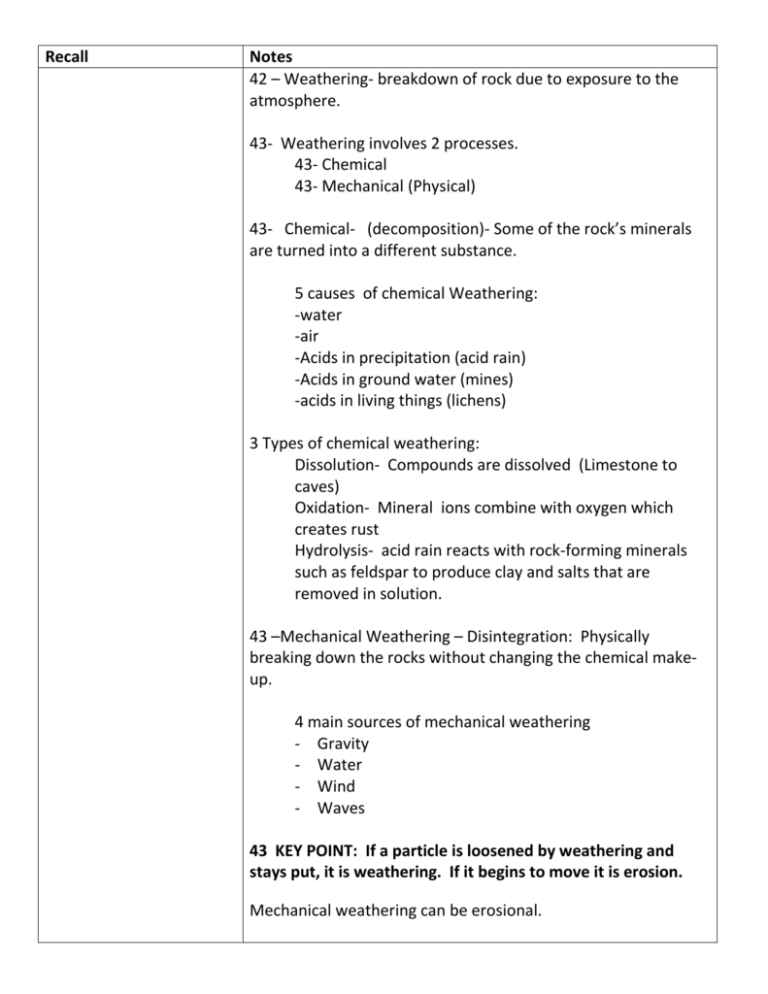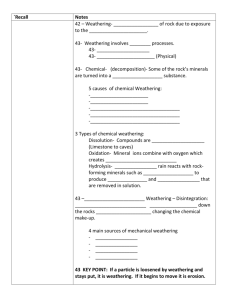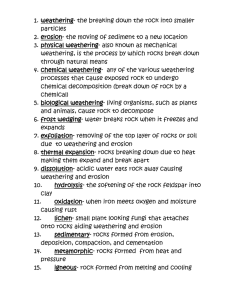Weathering and Erosion
advertisement

Recall Notes 42 – Weathering- breakdown of rock due to exposure to the atmosphere. 43- Weathering involves 2 processes. 43- Chemical 43- Mechanical (Physical) 43- Chemical- (decomposition)- Some of the rock’s minerals are turned into a different substance. 5 causes of chemical Weathering: -water -air -Acids in precipitation (acid rain) -Acids in ground water (mines) -acids in living things (lichens) 3 Types of chemical weathering: Dissolution- Compounds are dissolved (Limestone to caves) Oxidation- Mineral ions combine with oxygen which creates rust Hydrolysis- acid rain reacts with rock-forming minerals such as feldspar to produce clay and salts that are removed in solution. 43 –Mechanical Weathering – Disintegration: Physically breaking down the rocks without changing the chemical makeup. 4 main sources of mechanical weathering - Gravity - Water - Wind - Waves 43 KEY POINT: If a particle is loosened by weathering and stays put, it is weathering. If it begins to move it is erosion. Mechanical weathering can be erosional. Types of mechanical weathering: -frost wedging- freezing and thawing of water causes rocks to crack. -exfoliation- peeling off of sheets of rock layers -crystal growth wedging- involves salt crystals growing from salty waters -Root penetration- Strong plant roots grow into the rocks which causes fractures -Abrasion- Wind and water can cause rock fragments to bounce off of each other breaking down the rocks. -Glacier Weathering- Ice and rock interact -Other agents of weathering: flash floods, mud slides, and land slides






